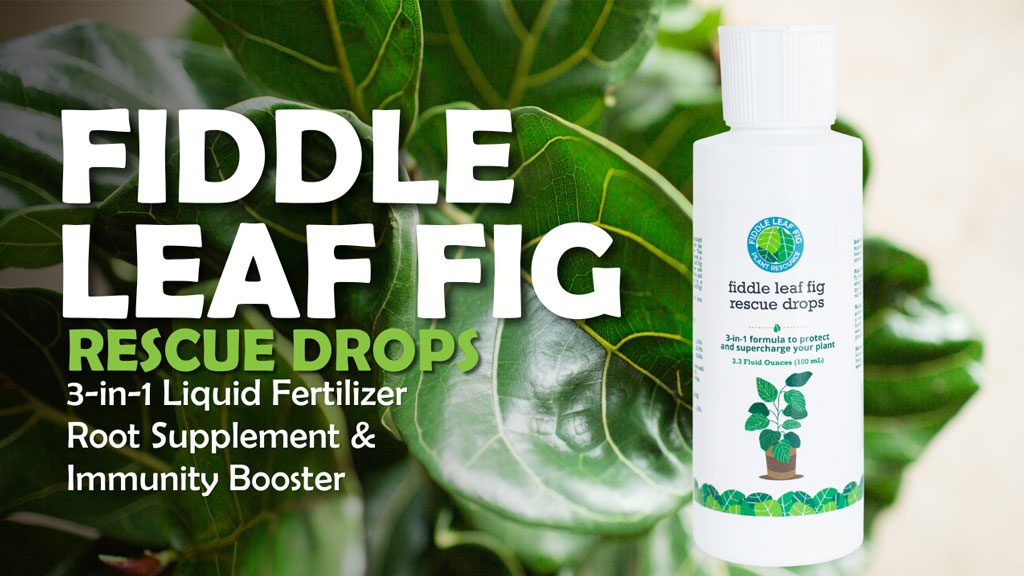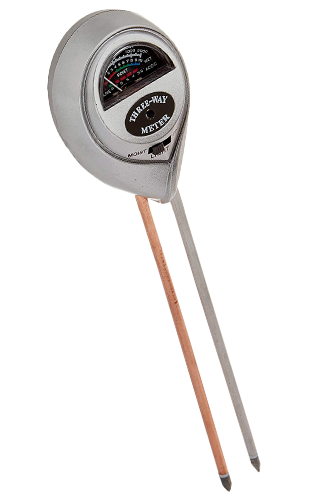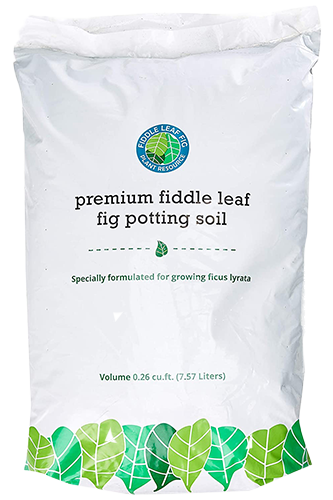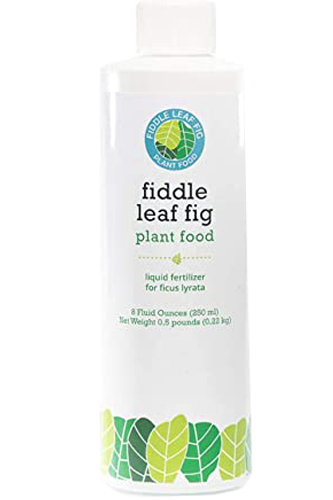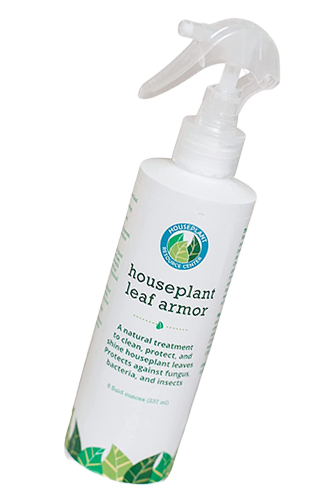Is your fiddle leaf fig getting “leggy”? Is there wide internodal spacing or a lot of empty stem space between older leaves and newer ones? This is called etiolation in fiddle leaf figs, which shows up in flowering plants when they don’t get enough light.
Let’s talk about etiolation in fiddle leaf figs, how to prevent it, and what to do if you’re already seeing significant internodal spacing in your fiddle.

What is internodal spacing?
First, a quick vocabulary lesson. What’s internodal spacing, anyway?
It’s exactly what it sounds like: the space between a plant’s nodes. When a plant doesn’t get enough light, internodal spacing becomes wider and the plant starts to get “leggy.”
Typically, it’s desirable for plants to have little space between nodes so they grow lots of leaves and strong stems. Plants with wide internodal spacing tend to have weaker stems, fewer and smaller leaves, and lower yields in plants that bear fruit. Read more about etiolation in fiddle leaf figs.
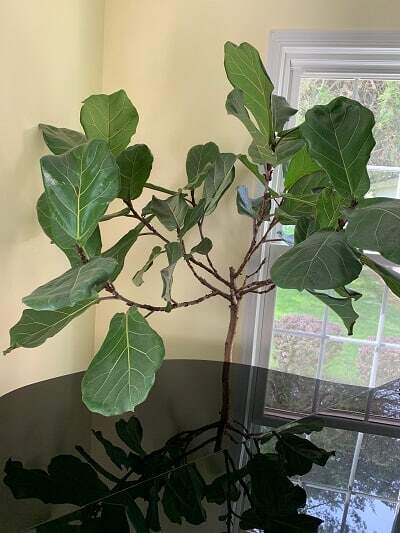
Etiolation in Fiddle Leaf Figs: What is it and how do you prevent it?
Take your plant propagation to the next level with our exclusive Notching Bundle, the essential tool for fostering healthier growth and lush foliage in your plants! https://amzn.to/463xe6W
Next stop on the botanical vocabulary tour: etiolation.
Etiolation in fiddle leaf figs describes the condition that develops when a plant receives insufficient sunlight and begins to “reach” for the light by growing in the direction of the nearest light source and by developing long internodal spacing. You might also notice that the newer leaves are smaller than the older ones and that the stems become weak and pale.
How do you prevent etiolation in fiddle leaf figs? By providing lots of light.
Fiddles are tropical plants and LOVE light, and they will get leggy and “reach” toward a light source if they don’t get plenty of bright, indirect sunlight for at least 8 hours per day.
The Best Lighting Conditions for a Fiddle Leaf Fig
The best place for a fiddle leaf fig is right in an east-facing window where it’ll get a little direct morning light and bright, indirect sun for the rest of the day. A west- or south-facing window can also work if you place it a few feet away where it won’t receive direct midday and afternoon sun, or if you use sheer curtains to filter the light.
However, you can acclimate your fiddle to full sun, which is actually very good for your tree. After all, they thrive in full sunlight in the wild!
If you only have a north-facing window or if your windows are small or obstructed by trees or awnings outside, you may need to supplement with a full-spectrum grow light for at least a few hours per day to keep your fiddle healthy, beautiful, and compact.
An easy and attractive way to do this is to put grow bulbs in regular light fixtures like lamps or chandeliers.
Read this article for more tips on how to integrate grow bulbs into your decor.
These are the LED bulbs we use and recommend! They’re energy-efficient, won’t scorch your fiddle’s leaves, look great in tall light fixtures, and provide lots of full-spectrum light for your plants!
Learn more about fiddle leaf figs and light:
How Much Light Does a Fiddle Leaf Fig Tree Need?
The Seven Signs Your Fiddle Leaf Fig Needs More Light
Fiddle Leaf Fig Troubleshooting: Sunburn vs. Not Enough Light
How (and Why) to Acclimate Your Fiddle Leaf Fig to Full Sun
My fiddle is already leggy. What should I do?
What can you do if you’re already seeing signs of moderate to severe etiolation in your fiddle leaf fig?
You have a few options. You can either encourage growth or remove the etiolated section and essentially wipe the slate clean.
If you want to encourage growth:
Option #1: Notch.
If your fiddle’s stem is strong and woody, you can try notching to encourage your tree to grow leaves or branches in the gaps between leaves. Here’s how to do this: Notching Video: Why, Where, When, How to Notch Your Fiddle Leaf Fig.
If you want to start over:
Option #2: Pinch off the top.
If notching isn’t an option or if you’d rather give your plant a fresh start, you can cut off the leggy top section, which will encourage your tree to start branching from the cut area.
As a bonus, you can try propagating the part you cut off to get a brand-new fiddle! Here’s how to do this.
More tips for growing a tall, healthy fiddle leaf fig tree:
Rotate your fiddle with each watering.
Every time you water your plant, give the pot a quarter turn. This will ensure that the tree gets sufficient sunlight from all sides and prevent it from leaning or reaching and reducing the chance of etiolation in fiddle leaf figs.
Fertilize regularly.
Fiddles need the right balance of nitrogen, potassium, phosphorus, and micronutrients like copper to grow strong trunks, robust roots, and those big, beautiful leaves! If your tree develops nutrient deficiencies, you might notice smaller leaves, discoloring, and weak stems.
Fertilize your fiddle regularly with a balanced liquid fertilizer, especially during the growing season. We recommend our Fiddle Leaf Fig Food because it’s formulated specifically for fiddles, is easy to use, and is gentle enough to use with each watering so you won’t have to remember a schedule. Simple!
Prune dead leaves.
If your fiddle’s leaves get damaged for any reason, remove the ones that are more than 50% dead. This will help the tree redirect energy toward healthy leaves and new growth.
Repot each year.
A healthy, growing fiddle leaf fig will outgrow its pot in a year or two, so plan on repotting each year so your tree’s roots will have room to spread out and support your tree as it grows taller! It’s also a good idea to refresh the soil every once in a while to replenish nutrients, prevent compacting, and promote great drainage. Repotting can help reduce the instance of etiolation in fiddle leaf figs.
Here’s how to repot a fiddle leaf fig.
Become a Fiddle Leaf Fig Expert!
Hope you learned about etiolation in fiddle leaf figs. Want to grow the healthiest, most beautiful fiddle leaf fig possible? Check out these resources to learn everything you need to know about caring for your fiddle!
The Fiddle Leaf Fig Expert Book

